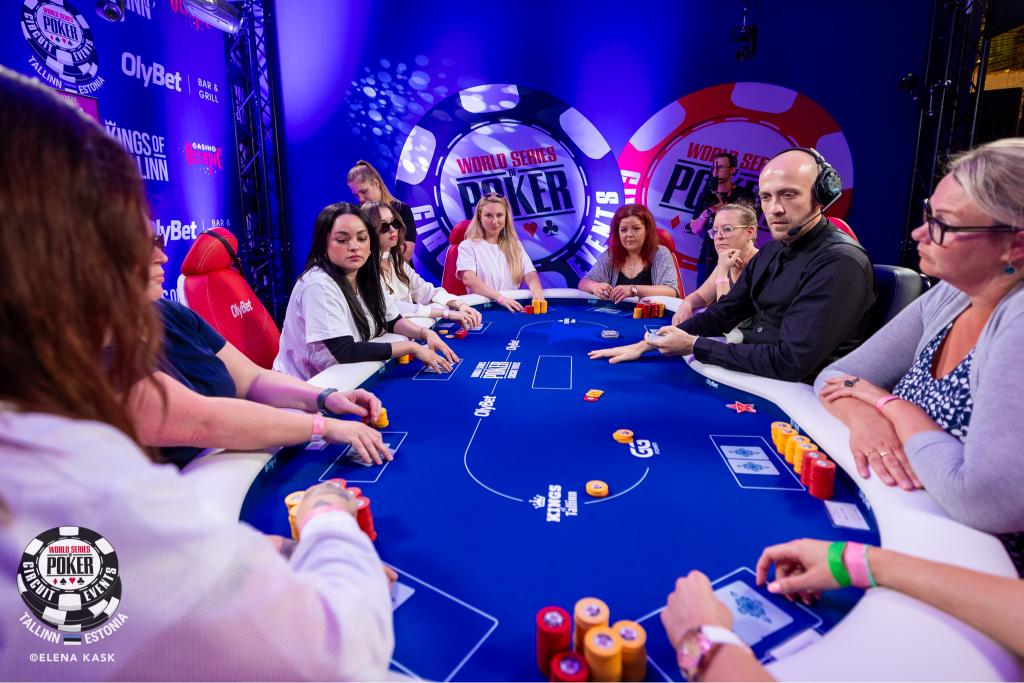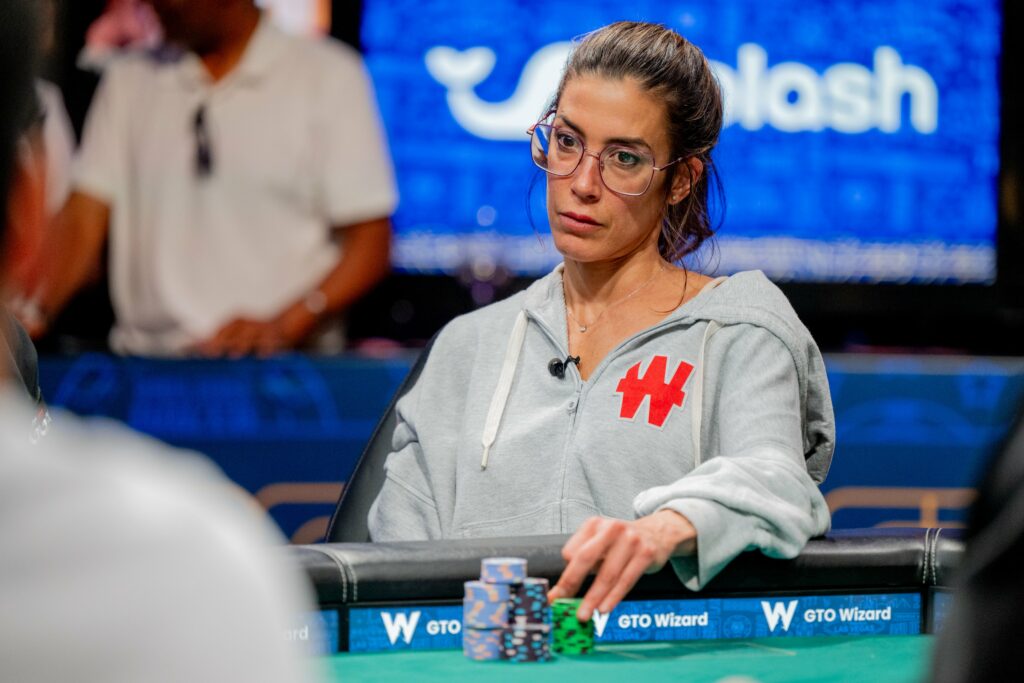
In recent years, women-only poker tournaments have experienced remarkable growth, both in participation and competitive calibre. Once perceived primarily as welcoming, softer-entry events for recreational players, these tournaments are now highly competitive battlefields, attracting an increasing number of skilled professionals.
The PokerStars Winter Women’s Festival 2024 Main Event welcomed a field of 271 players, marking the largest women’s poker tournament ever held outside Las Vegas. At WSOP 2025, Event #70: $1,000 Ladies No‑Limit Hold’em Championship featured a record-breaking 1,368 entries, all women participants. In the $10,000 Main Event, there were 369 women entrants, with Leo Margets making history by becoming the first woman in 30 years to make the final table. More and more poker festivals now feature dedicated women-only events. Queens of Tallinn stands out as a trailblazing festival in Europe, while the OLA Poker Tour’s debut in June 2025 at King’s Resort Rozvadov included a dedicated Ladies Event, to name just a few.
- Read more: UK Women to Watch at the PokerStars Women’s Festival
- Read more: Queens of Tallinn Returns August 21–24 with 11 Events
- Read more: Drea Karlsen Wins WSOP Circuit Queens Ring
- Read more: Shiina Okamoto Triumphs in Event #70: $1,000 Ladies Championship for $184,094
- Read more: Strategic Observations: Leo Margets 2025 WSOP Main Event Day 8
More women are studying advanced game theory, solver-based strategies, and ICM models, bringing a new edge to these fields. As prize pools grow and prestige rises, the standard of play has elevated significantly. Women-only tournaments are no longer simply social gatherings but true tests of strategic discipline, adaptability, and mental resilience.
Today’s women-only events feature diverse line-ups: from recreational enthusiasts seeking community, to experienced grinders with years of online and live results, to emerging professionals treating these tournaments with the same seriousness as any high-stakes mixed field. This evolution has redefined what it takes to succeed. Winning now requires a comprehensive understanding of population tendencies, ICM exploitation, and psychological dynamics unique to these fields.
In this article, we explore the strategic adjustments, mindset shifts, and advanced concepts required to thrive in modern women’s poker tournaments – tournaments that are no longer merely inclusive entry points but have become arenas for top-tier competitive poker.

Adapting Strategy to the Environment
Poker strategy is always about adapting to your environment. While core GTO fundamentals remain universal, population tendencies, psychological dynamics, and strategic exploits differ between women-only tournaments and mixed fields. Understanding these differences is essential if you want to optimise preparation, increase profitability, and build a robust mental game.
Player Pool Tendencies in Women-Only Poker Tournaments
As the landscape of women-only poker continues to evolve, one clear trend has emerged within higher stakes events: the overall standard of play has become exceptionally competitive and disciplined.
Disciplined Aggression Over Recklessness
Unlike some mixed fields where reckless aggression can dominate, women-only tournaments often showcase players who exercise controlled, purposeful aggression. Many push their edges with well-timed bets and raises rather than punting stacks unnecessarily. There is a growing understanding of when to apply pressure and when to preserve stack utility, demonstrating deeper ICM awareness.
Emerging female professionals blend their aggressive lines with solid value-betting ranges, creating balanced strategies that are difficult to exploit. This disciplined aggression forms the backbone of success in modern women-only tournaments.
Patience and Mental Endurance
Another notable characteristic is the patience and focus maintained throughout long sessions. Seasoned players exhibit minimal emotional tilt after losing hands or facing tough beats, maintaining strategic discipline late into Day 2 or at the final table. Impulsive calls and frustration-driven hero bluffs are rare. Instead, we see players taking time to consider actions carefully, resulting in tournament dynamics where edges arise from technical skill and exploitative precision, not from hoping opponents lose focus under fatigue.
Bet Sizing Tendencies at the Professional Level
One key strategic observation in women-only events at the professional level is the consistency and clarity of bet sizing choices. Top female players tend to adopt sizing strategies aligned with modern GTO outputs, favouring bet sizes that maximise fold equity or extract thin value efficiently. For instance, continuation bets are often sized smaller on dry boards to preserve stack depth and maintain range advantage, while turn and river bets show a clear polarisation strategy – with large sizings representing strong value or well-selected bluffs. Compared to some mixed fields where sizing tells can be more erratic, women’s tournaments at pro level showcase disciplined sizing patterns that reflect rigorous off-table study. This makes bluff-catching decisions more solver-aligned, as opponents rarely over-bet randomly without understanding polarisation thresholds.
Strong Table Awareness and Adaptability
An increasing number of female professionals demonstrate impressive table awareness, consistently adjusting to opponents rather than playing robotic ranges. They observe and categorise table tendencies rapidly, tailor their lines based on population exploits rather than default solver outputs alone, and shift gears seamlessly between aggressive and conservative strategies based on ICM, opponent pool, and pay jump factors.

Balanced Bluff-to-Value Ratios Among Top Players
At the elite end, women-only fields feature players who have thoroughly studied GTO ranges and bluff-to-value ratios, employing optimal river bet sizing with balanced frequencies. There is a growing understanding of blocker effects, which are increasingly incorporated into river decisions. Top players mix in well-chosen bluffs while ensuring strong coverage of value combos to remain unexploitable.

Table Image Perceptions
In mixed events, female players often encounter table image biases, such as assumptions of tighter ranges, which can be leveraged to run profitable bluffs. In women’s tournaments, such biases are largely absent. Fold equity from stereotype-based underestimations diminishes, so female players transitioning from mixed fields must adjust by relying purely on strategic execution and population exploits, rather than psychological fold equity rooted in gender perception.
Psychological and Emotional Factors
Women’s tournaments typically foster a more social and supportive atmosphere, with less intimidating table talk and fewer confrontational situations compared to some mixed events. Emotional volatility driven by aggression-based intimidation is rare.
The evolution of women-only poker tournaments reflects a powerful shift within the broader poker landscape. These events are no longer defined solely by inclusivity or community-building; they have transformed into arenas showcasing some of the sharpest technical skills, strategic precision, and psychological resilience seen in modern tournament play. As participation continues to grow and more emerging professionals enter the scene, women-only tournaments will remain critical proving grounds for elite competitive poker – challenging players to adapt, evolve, and perform at their absolute best.
Upcoming Women-Only Poker Tournaments in 2025
| Event | Date | Location | Details |
|---|---|---|---|
| Women’s Summer Festival | Aug 12–17 | London, UK | £100K GTD Main Event |
| Queens of Tallinn | Aug 21-24 | Tallinn, Estonia | Multiple Ladies Events |
| Queen of Diamonds | Aug 24 | Las Vegas, USA | LIPS Ladies event |
| LIPS Ladies Aruba | Sept 23–24 | Aruba | Caribbean Poker Series |
| Queen of Queens | Nov 23 | Las Vegas, USA | LIPS Ladies event |
| WIP Winter Festival | Dec | Las Vegas, USA | Multiple Ladies Events |
























